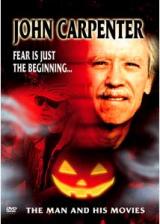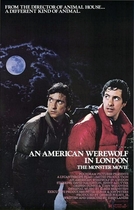Our editor-in-chief Nate Yapp is proud to have contributed to the new book Hidden Horror: A Celebration of 101 Underrated and Overlooked Fright Flicks, edited by Aaron Christensen. Another contributors include Anthony Timpone, B.J. Colangelo, Dave Alexander, Classic-Horror.com's own Robert C. Ring and John W. Bowen. Pick up a copy today from Amazon.com!
John Carpenter: Fear is Just the Beginning (2002)
I’ve never been a fan of John Carpenter’s work after 1982, but I’m starting to see the light for two reasons: 1) I’m still in awe of his oeuvre from 1976-1982, a run which produced Assault on Precinct 13, Halloween, The Fog, Escape from New York, and The Thing; and 2) because of what I saw and heard in the 60-minute documentary John Carpenter: Fear Is Just the Beginning - The Man and His Movies (JC-TM&HM).
That six-year run alone made Carpenter one of horror’s best directors. However, after viewing JC-TM&HM, I’m convinced Carpenter is one of America’s most important directors in the past 35 years. Perhaps it’s no coincidence that the Library of Congress in 2006 added Halloween, along with other classics including Notorious, Blazing Saddles, and Rocky, to its National Film Registry, an honor that celebrates films for being "culturally, historically, or aesthetically significant”.
With commentary from icons such as Jamie Lee Curtis, Peter Fonda, Alice Cooper, George Romero, Adrienne Barbeau (Carpenter’s ex-wife), Kurt Russell, Stacey Keach, and of course, The Man himself, JC-TM&HM packs a wallop, and fans have plenty of informative nuggets to chew. The documentary begins by narrating Carpenter’s early years in Carthage, New York and Bowling Green, Kentucky. The latter location, where he spent most of his youth, combined with his love of science fiction films (It Came from Outer Space was instrumental) and D.C. comics such as Tales from the Crypt and Weird Science, quickly transformed him into an Outsider, a trait that has triumphantly carried him through almost five decades of filmmaking.
Carpenter’s years in the tumultuous late 1960s at the University of Southern California’s film school are also portrayed effectively. A few close friends he met there offer insightful comments, and the context of his first successful film, 1970’s The Resurrection of Broncho Billy, is aptly highlighted. Carpenter wrote the short’s script along with his buddy, Nick Castle, who plays The Shape (aka Michael Meyers in Halloween); the “Prince of Darkness” also composed its music and edited it. The film won an Academy Award, Carpenter’s only, and was the first student film to receive a nationwide release. The seeds of Carpenter’s maverick, independent soul were planted.
The documentary then chronologically navigates through commentary and production notes for the majority of his films. The focus is his earlier films, but enlightening tidbits are offered for almost every installment of Carpenter’s vision. Among them are the London reception for Assault on Precinct 13; the genesis of Halloween’s haunting soundtrack; the origins for The Fog’s screenplay; and the unexpectedly harsh criticism for The Thing given the post-E.T. world it was released into. For another take on Carpenter’s legacy, visit Marco Lanzagorta’s article in Senses of Cinema’s Great Directors Database.
A few key Carpenter characteristics emerge throughout JC-TM&HM: he had a positive relationship with his father, who was a major influence throughout his life; his interpersonal skills as a director, particularly his exceptional abilities to lead, delegate, foster loyalty, and provide artists with clear direction and creative space has been vital to his success; producer and screenwriter Debra Hill, who Carpenter shared a romantic relationship with in the late 1970s and collaborated with on key films including Halloween, The Fog, and Escape from New York and L.A., is a major architect in the mesmerizing labyrinth that is Carpenter’s filmography; his love of Westerns and the director Howard Hawks; his ability to work efficiently and produce quality work under limited budgets; and finally, three important themes that emerge in his films: urban decay, religion, and aliens.
Carpenter’s greatest achievement, though, is his independent spirit. This is particularly important since his career ignited during the 1980s, a decade when directors lost the momentum they gathered during the 1970s, and a time when mega-blockbusters with sequels ad nauseam were the norm. No wonder he abandoned the Halloween franchise. In this context, Carpenter helped pave the road for future independent filmmakers, whose success catapulted in the late 1980s and early 1990s.
This documentary achieves the medium’s primary objective: it informs and educates. Too many documentaries abandon that purpose and side with flash, pizzazz, cosmetics, and other gimmicks that draw more attention to the documentary itself than its subject. This one works. If it has one flaw, it’s that Carpenter’s latter years are glossed over. Nevertheless, horror and Carpenter fans should definitely check this one out. I can think of many other ways to more foolishly spend 60 minutes.
The bottom line is Carpenter is an incredibly talented soul who has carved a formidable reputation as one of America’s primary auteurs. No, I’m sorry, the bottom line is this: John Carpenter. Enough said.








